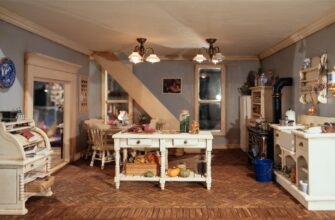Nowadays plastic products are found everywhere. Their uses range from being employed in the development of highly advanced technological devices, being consumed as fuel, utilized for the production of booklet materials and plates, etc. The plastic revolution has seen an incredible experimentation and imitation of processes that lead to the creation of new and unique products.
Its uses were so many that it led to the creation of different institutions having their own domains, i.e. school, office, hospital, etc. Toleness of use and proliferation of use of the plastic products have made the market a arena for the manufacturers of plastic products to earn their due.

Plastic boxes and containers are so useful in our day-to-day life that we cannot imagine life without it. In the beginning it was used just as a container to carry things but later on plastics were made to be used as clothing,Signs, containers for holding things. It has gone as far as the development of the plastics to different forms for storing and displaying information, sportswear, using of plastics for building and construction etc.
The uses of plastic containers are increasing because of the durability, flexibility, and the availability of the plastic products.
Storage
Plastic containers are so secure and durable that even the toughest of goods can be stored safely. They are also light in weight and can be kept throughout the time in favourable conditions.
One of the main reasons why the use of plastic containers for storing Information and other media products has been flourishing widely is because of their ability to survive for long durations in spite of the harsh conditions they encounter. Their robustness and density provides for long product life and makes them ideal for long-term storage.
One of the factors that has encouraged the use of plastic containers is that they are resilient. They haveAbsorbent properties that make them sensible for long term storage. They have a high surface strength and when treated with UV and other chemicals, they are able to withstand that. They are resistant to abrasion and because of their plasticum they are resistant to cracks, warping and split formation.
One of the other uses of plastic containers is that of plastic bags and containers for carrying things. plastic bags have been used as totes since the start of the commercial use of plastic bags in the 70’s. The plastic bags these days come in a wide range of sizes.
In the beginning plastic bags were made from the synthetic pvc pellets or cellulose fiber. The main advantage in manufacturing these bags was their strength. If you wanted to strong bag, you just had to combine many bags of the same density and size! Biggies like Wal-Mart, Costco and Sam’s Club used to have to deal with consumer complaints for flimsy bags for flab becoming soon repaired and restyled!
meantime since the invention of the non-woven resin gum resin material in the late 60’s by the NASA scientists, the bag manufacturing industry was able to bring the bags to the market and developed into polyethylene bags that are flexible and lightweight. These plastic bags are very cheap and are used for packaging and carrying application. TheIndustrial Revolution made possible the emergence of the modern plastic cake box, the plastic milk container, the office trash can, pickup truck trash cans, camping coolers and so forth.
Bags Fabric –
In 1852, William Morrison, from Bath, England, invented the plastic fabric that was able to self-heat, dry and trousers. This brought the development of the Trench Bag to a premature end. A century later, Martin Froese invented the modern wrap-over bag which was the beginning of the modern design of the modern plastic diaper. Today, the polyethylene plastic film, able to withstand extreme temperatures, has made the final discard of the TNR brand of diaper paper.
Polyethylene Trugs –
This durable second generation Trug was first used as double wrapping for binding. Innotation molded polyethylene tissue treads are used for various courses of binding. In the past, these industrial binding machines were designed to be used with existing binding machinery by means of a swap service. The present industrial requirements make it possible to continue using the same binder for the binding process, even though many buyers have started to use plastic for the manufacture of their binding needs.
Polyethylene Plastic Card Wallet –
This material will help to promote the environmentally friendly movement. The use of this versatile material has made it possible to virtually eliminate depending on the age of the holder.
The Card Wallet is designed to accept only the green and recycled materials in its production. These are produced by Decker, one of the top producers of high-quality materials for the manufacture of all kinds of products. These Decker materials are present in the form of powder, powder plastic or film.








